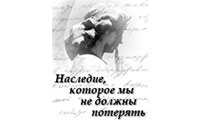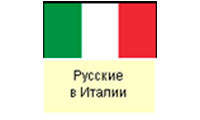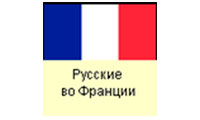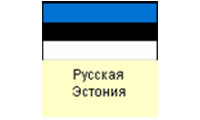The Old Believers of Riga
Arnold Podmazov
Old Believers’ Church Building and Liturgy
Living in the situation of persecutions until the beginning of the 20th century, Old Believers did not have possibility to build churches in the places of their settlement. Very often services were organized in the homes of the faithful. Such prayer houses were a regular phenomenon, not only in villages, but also among the Old Believers who lived in cities.
The prayer houses of the Bespopovtsy Old Believers function as chapels, as there is no a special room for the altar. In the Eastern part of the church, like in the traditional Orthodox churches, there is an iconostasis, a wall covered (often in several rows and in a specific order) with icons representing different subjects (the life of Christ, Theotokos, feasts etc.). In front of the iconostasis there is solea, the front elevation. On left and right upon the solea, there are two choirs, the places for the lower clerics (pricht – singers, chanters) during the service. Since there is no sanctuary behind the iconostasis, the solea becomes the focal point in the church building, where the Cross and the Gospel book are also placed. The daily liturgical cycle of Pomorian Old Believers is celebrated in accordance with the Orthodox tradition, with the exception of the eucharist, as well as other elements of the liturgy traditionally performed by a priest.
The service is led by a nastavnik (spiritual father). The nastavnik performs the reading of the Gospel, incenses the church, pronounces necessary exclamations and oversees the orderly celebration of the service. For the incensation, the Bespopovtsy Old Believers use katseya, the ancient form of the censer that has come to Russia from the Christian East and was widely used in Russia until the 17th century. This is a metallic incense burner in the form of an “onion” dome with an three-bar Orthodox cross on top, and with a collapsible wooden handle. It is used during services both at home and in the church.
Traditionally, during the common prayer in the prayer houses by Fedoseyevian Old Believers, men and women had to pray separately, i.e. on their respective sides of the church. For this reason, the church was often divided by a partition wall that later was covered by icons, like in the Dormition Church of the Grebenshchikov Community. There are two sections of the nave: for men (to the right) and for women (to the left). Today one chamber (“for men”) is customarily used, but on the feast of the Dormition of the Theotokos, the second chamber is also used for the procession.
Before the beginning of the service and after the end of the service, as well as during the particular moments of the service there are prostrations (bows). In the prayer tradition of the Old Believers, like in Russia before Peter the Great, there are three kinds of bows: simple (“to the chest”), medium (“to the waist”), and great (“to the ground”). In the case of great prostration in church, as well as during prayers at home, a special square prayer rug (podruchnik) is used. Podruchniks are made of different pieces of fabric sewn together (“patchwork”). The main purpose of the prayer rug is to keep the hands clean during the prayers.
One of the most distinctive and interesting objects related to the traditions of prayer among Old Believers is lestovka (diminutive from Slavonic lestvitsa ‘ladder’), a special form of a prayer rope or prayer beads, originating from Byzantium. Lestovka is a plaited leather or fabric ribbon in the form of a loop, having 109 “steps”. These “steps” are divided in unequal groups, in order to count prayers or bows. The loop symbolically signifies the unending prayer, the spiritual ascent from the earth to the Heaven. Lestovka is a necessary accessory of each and every believer to be used during prayer in church or at home and it is an obligatory element of the church dress of a nastavnik (spiritual father).
During services in the Old Believer churches it is customary to light wax candles which possess a special meaning for those who pray. The candle, made of pure wax, symbolizes the pure sacrifice given to God. The melting of wax due to fire is a symbol of the soul of the believer, softened by the grace of prayer.
According to the Eastern Christian tradition, only a capella singing (not accompanied by any musical instrument) is used during the services. At the Old Believer services, psalmody plays likewise a crucial role. Just like iconography, liturgical texts, and, in general, the orderly celebration of the service, the Old Believers’ psalmody is meant to make manifest the spiritual beauty of the ancient Orthodoxy.
The Znamenny Chant is the oldest kind of the Russian Orthodox liturgical singing. It has got its name from the special system of notation that used “hooks” (kryuki) or signs (znamena) in order to write down the melody without the use of modern staff notation. The Znamenny singing is either unison (involving one voice) or antiphonal (using two choirs which alternate in chanting the hymn). The melodic structure of the Chant is dependent upon the system of eight tones or modes, its musical lines are characterized by smoothness and balance, absence of pauses and dynamic colorations. The Znamenny Chant in its more simple form was brought from Byzantium at the time of the Baptism of Rus. In the Old Believer tradition, the Znamenny Chant remained as the basic form of liturgical music, as the polyphonic singing, introduced in the period after the Nikonian reform, was never accepted by Old Believers.
The Znamenny Chant exists in two forms: as a recension of the chant, fixed in a written form, and as an oral chanting tradition that follows a model hymn (na podoben), following the tonal melody, or following model melody as sung by another chanter. The notated musical codices represent a special type of handwritten books which are used during church services. The skill of reading the notation is learnt today in the direct contact with bearers of the tradition, because this type of note recording does not fixate the height of the melody sound, but rather presupposes that the singer has a set of the musical “formulae” (popevki) at his disposal.
In order to determine the dates of Church festivals Old Believers use the Julian (Old Style) Calendar. The Old Believers’ books also follow the ancient system of year numbering which begins with the Creation of the World. The year is calculated, adding the number 5508 to the number of the year after the birth of Christ. This ancient system was used in Russia prior to the 18th century. Peter the Great issued the Ukase to regard January 1, 7208 as the first day of the year 1700.
Content
- Introduction
- Schism and “Old Belief”
- Beginnings of the Old Believers on the territory of Latvia
- Confessional Characteristics of Old Believers in Latvia
- Old Believers’ Church Building and Liturgy
- Books and Book Culture
- Iconographic Traditions of Riga Old Believers
- Pomorian Old Believer Traditions of the Art of Copper Casting
- Old Believer Churches in Riga
- Old Believer Societies in Riga
- Old Russian Residents of Riga and Old Believers in the 18th century
- The Years of Prosperity and the Years of Misery: Riga’s Old Believers in the 19th Century
- Riga Old Believers at the Turn of 19th and 20th Centuries
- Riga Old Believers in the Independent Latvia (1918–1940)
- Riga Old Believers During the Soviet Period (1940–1941, 1944–1991)
- Riga Old Believers after the Restoration of Latvia’s Independence
- Photogallery
- About the Project. The Old Believers of Riga: 250 Years of Cultural Historical Experience







